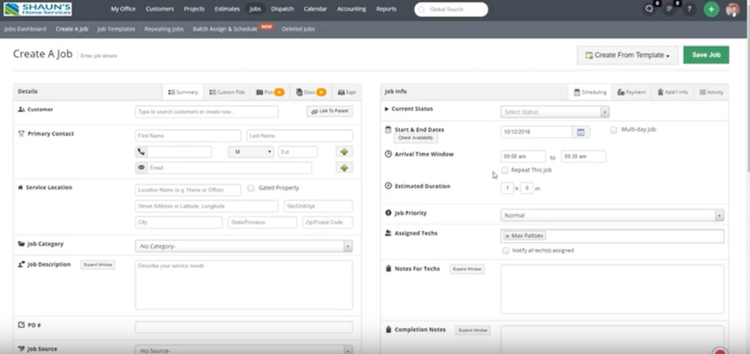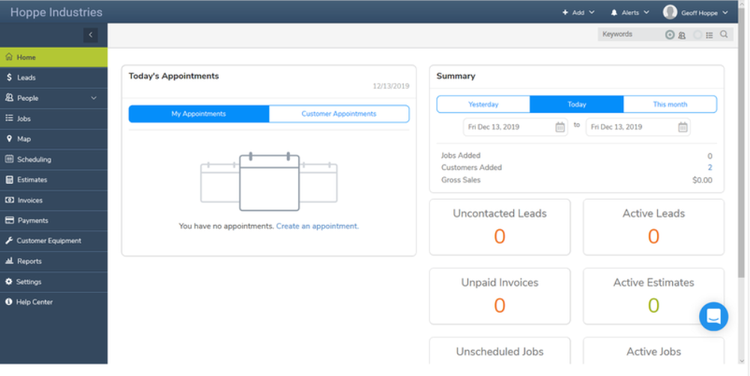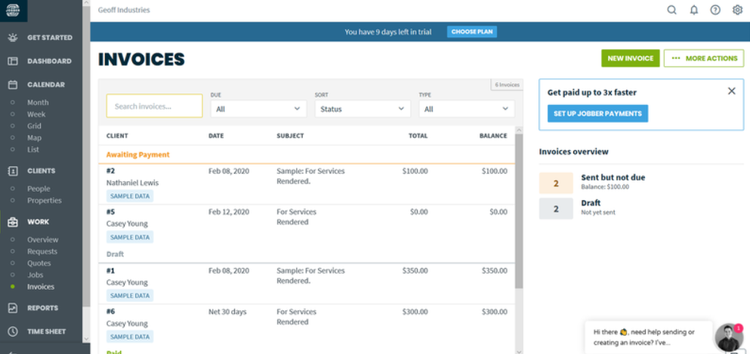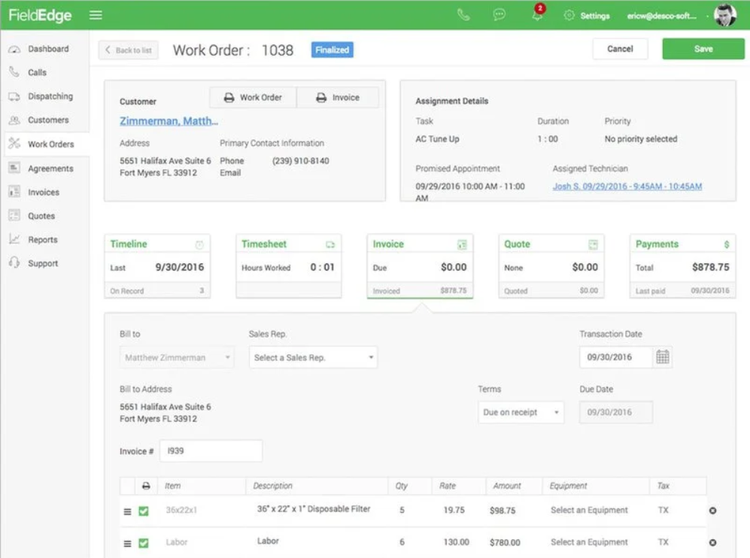If you’re wondering how important a work order is to a business, just think of what it would be like to run a heating, ventilation, and air conditioning (HVAC) installation company without them.
A customer calls your company to ask for the installation of an air conditioning unit at an office building. You tell your technician to head out there and get it done. Once there, the technician finds out he hasn’t brought the right type of unit.
Also, he arrives hours later than the customer was expecting, and he talks to the wrong person at first who was unaware of the request because she works in a different department. The technician returns to the office back at square one, and you have an angry customer and nothing to invoice.
A work order prevents this nightmare scenario by putting all of those details together in a single document that everyone -- you, the technician, and the customer -- can reference so you’re all on the same page.
Here’s everything you need to know about work orders and how to implement them in your own business.
Overview: What is a work order?
A work order is a document with details on a job or task a contractor is to perform for a client. It is typically assigned to an employee to complete and originates from a customer request. Work orders are essential in the field services industry because they help to organize various tasks with widely varying details. Maintenance, equipment repairs, and installation are examples of field service work that usually involve work orders.
What are the types of work orders?
The different types of work orders are too numerous to list here, but these four examples will give you a good sense of what they entail.
1. Safety inspection
Field service companies often must conduct safety inspections to ensure compliance with regulations from the Occupational Safety and Health Administration (OSHA). This may include performing tasks such as cleaning stairways, changing lighting to improve visibility in dangerous areas, removing hazardous material, replacing signage that contains important warnings and information, and addressing waste management.
2. Property inspection
A property inspection is a necessary part of performing maintenance or making repairs. These inspections consist of determining what electrical work is necessary, what kind of landscaping needs to be done, or identifying plumbing maintenance or repairs, to name a few examples. Usually these will be separated into individual work orders.
3. Heating, ventilation, and air conditioning installation
HVAC installation companies prepare work orders to handle the difficult work of installing heavy heating and cooling equipment in homes or commercial buildings on behalf of customers. This includes installation of heating boilers and systems, ventilation pipes, and air conditioning units.
4. Manufacturing equipment maintenance check
Maintaining equipment is often a time-intensive project that requires a work order and specialized labor. A field service company would be provided with a maintenance work order to tune components, replace parts and tools, and add lubricants and fluids.
5. General service
A general service work order would list any particular labor to be done, such as a pest control visit or a full interior cleaning. The work order would also list any parts or materials necessary for the task.
Example of a work order
Work orders vary widely depending on the industry, company, or customer, and the amount of detail in them will differ based on the complexity of the project. However, if you want to create a work order, it generally should include five components:
- Company contact information, such as the phone number, email address, or physical address of both the contractor and the client
- Work order number
- Work order description, including details on what tasks are to be done and any specifications on how they should be done
- Location of job
- Assigned employee
Here’s an example of what a work order form or request for a simple job might look like in Service Fusion, a field service software platform:

Service Fusion allows you to create a work order by filling out a simple form. Image source: Author
As you can see, this form requests such information as start and end dates, arrival time window, estimated duration, job priority, job description, customer contact details, and so on.
Why your small business should use work orders
It’s not advisable to run a field service company without using work orders for three chief reasons.
1. Increased efficiency
A work order makes your business run more efficiently because it provides more clarity on what jobs need to be done, how they should be done, and who is responsible for doing them.
It makes it easier to allocate resources throughout your company, and you’ll process jobs more effectively -- meaning you can fit more jobs in during the day. With a good work order system, tasks won’t be neglected, and you’ll enjoy higher customer satisfaction.
2. Customization
Work orders can vary based on the requirements of the customer. They are flexible for internal company objectives, and they provide the level of specificity needed for team members to execute them. As the company evolves and needs change, you can alter the format and style of the work orders so they grow with you. And, as the market changes, you’ll be able to respond seamlessly.
3. More profitability
With a solid work order system, you’ll have the capacity to increase sales while reducing costs and inefficiencies. This allows your company to expand market share. Thanks to digital apps, you have more flexibility, and your team will be more nimble and complete more jobs in less time. You’ll also have happier customers, which can lead to more customers due to positive word of mouth.
The best field service management software for creating work orders
You don’t have to reinvent the wheel when it comes to work orders. Lots of field service management software platforms exist that offer templates you can adapt for your business, whether you're in the cleaning, pest control, HVAC, or some other field service business. The following three options are among the best we’ve reviewed.
1. mHelpDesk
mHelpDesk organizes work orders on both the home screen and through the scheduling tab. This makes it easy to view work orders that are coming up in the next week. Also, the mHelpDesk app lists upcoming jobs, and tapping on a specific job will take you to information about the work order.

The home screen in mHelpDesk shows outstanding work orders at a glance. Image source: Author
2. Jobber
Jobber's desktop dashboard shows an overview of what jobs are currently active versus jobs that have not been invoiced. The Work screen shows the status of invoices. The Jobber app has a work order feature showing a calendar view of upcoming jobs, and tapping on the task will show more information.

Jobber’s invoicing dashboard shows a handy list of closed work orders. Image source: Author
3. FieldEdge
FieldEdge has automated work order software features -- it will create a new order whenever a customer calls, which may help streamline your operations and reduce manual entry, particularly for large, complex field service operations. The app also has an interface that allows you to zero in on important information in the work order.

FieldEdge’s work orders include a detailed but organized description of the task. Image source: Author
Field service software can revolutionize your business
Field service management software isn’t only good for handling the work order process. It also helps you run all aspects of your business with features such as technician scheduling, dispatching, invoicing, and more.
Check out some reviews of field service software to find options that look like they might fit your business and give each of them a test drive. The right software is guaranteed to change how you run your business for the better -- which can only mean an expanded bottom line.
Our Small Business Expert
We're firm believers in the Golden Rule, which is why editorial opinions are ours alone and have not been previously reviewed, approved, or endorsed by included advertisers. The Ascent does not cover all offers on the market. Editorial content from The Ascent is separate from The Motley Fool editorial content and is created by a different analyst team.